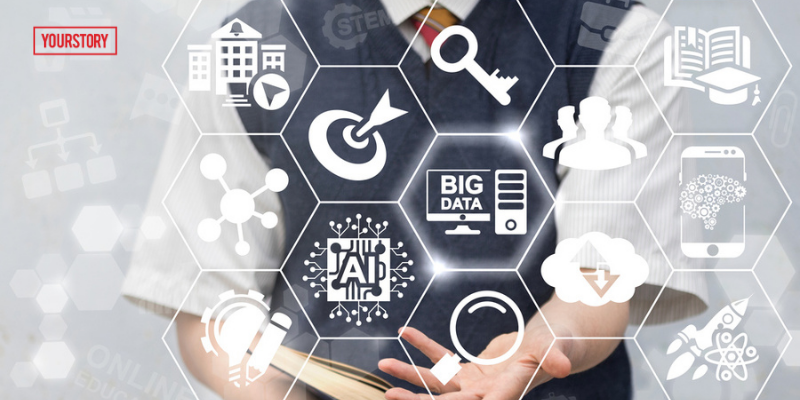How big data analytics can shape edtech in India
Ilangovel Thulasimani, Co-founder & CTO, Practically, writes about how Big Data can help bring the emphasis on applied skills and problem solving.
Companies that provide quality online education use data to provide analytics to teachers and parents. Data is a crucial resource for teachers as it gives them feedback continuously, and helps them understand the progression of a student along the learning curve, so that they can plan the next class appropriately. Parents can also actively monitor progress through real-time dashboards.
The intelligent dashboards provide teachers quick analysis on which student is doing well, in what subjects, and based on what parameters. It is also a handy tool for parents seeking to supplement their child's education with immersive self-learning apps beyond the traditional classroom environment.
In many ways, data analytics is paving the way for further automation within the industry. Whether it is the adoption of school management solutions or online class management applications, Big Data is foraying into newer areas within education. It opens the scope for analytics to further integrate with advanced technologies such as Artificial Intelligence and Machine Learning.
Aspects of education that were earlier labor-intensive can now happen with a single click or even automatically. For example, teachers no longer have to monitor attendance or set question papers or do the tedious job of correcting each answer sheet. It is all automated, thanks to advancements in technology. Teachers can now focus on their primary task – teaching.
Big Data also allows for interactive and immersive learning with the help of audio-visual aids. With artificial intelligence, students can now see live 3D models of any object in the world and obtain information about that object from diverse online resources.
Teachers can further run simulations on various learning scenarios to help better prepare for their classes. Machine Learning algorithms also aid in improving retention of concepts based on students' past performance and learning style.
Classroom learning
As technology takes classrooms online, Big Data is helping to keep it efficient and engaging. Students’ attentiveness is monitored real-time through camera and AI systems, providing instant feedback to teachers facilitating appropriate interventions with different pedagogical approaches. Such technologies are also extended to support proctoring exams online.
Individualised learning
Every student is unique. Big Data and Machine Learning can analyse a student’s learning trail, and not only help in understanding this uniqueness, but also leverage it by creating an individualised study plan with appropriate pedagogical approaches and contents according to their learning style, to achieve the student’s specific learning objectives. It is like having a personalised tutor for every student.
Contextual and immersive learning
Learning is most effective when a curious mind finds its answers. One gets curious when he/she explores the world or encounters new experiences.
This means the continuum of learning should extend beyond the classrooms and blend into the lifestyle. Imagine a personal tutor in the student’s pocket that correlates academic concepts to his/her real-life experiences as they unfold.
For example, when a curious student stares at the night sky, based on the geo-location, date and time, the concept of astronomy is taught as they witness them. Adding to this, the wonders of Virtual Reality and Augmented Reality content give a perfect blend of knowledge and experience that every student looks for.
Better assessment models
Most competent edtech platforms today have seamlessly incorporated the concept of Adaptive Learning – where the diagnostic assessments and formative assessments become an integral part of the continuous learning cycle.
As Big Data systems track a student’s knowledge level in different concept areas continuously and provides instant feedback, the assessments are more precise. Even in cases where Summative and Norm-Referenced assessments are required, the results are more predictable. This helps avoid anxieties associated with such assessments especially in a competitive scenario.
Effective education should achieve a fine balance between knowledge and skill development. While most traditional assessments are tuned to assess the knowledge quotient, the skill gaps are not effectively assessed. Big Data can help bring the emphasis on applied skills and problem solving.
In India, with about 250 million students, education has always been considered as the key to development and garnered a lot of priority and attention from the public and policy makers alike. Big Data provides the much-needed analytics highlighting the inequalities in the access to quality education across different segments of the society so that appropriate measures can be implemented to make Right to Education a reality.
No wonder the pandemic has accelerated the adoption of technology in the education landscape. As the edtech evolution gains momentum, we are beginning to see the benefits. A wide spectrum of modern technologies like Big Data Analytics, Machine Learning/Artificial Intelligence, Virtual Reality/Augmented Reality, are all making their way into the edtech space, enhancing students’ learning experiences, enabling teachers, and connecting parents to the ecosystem.
These tools and technologies are becoming extensive and ubiquitous in a way that they are redefining the future of education; and they are here to stay.
Edited by Anju Narayanan
(Disclaimer: The views and opinions expressed in this article are those of the author and do not necessarily reflect the views of YourStory.)







